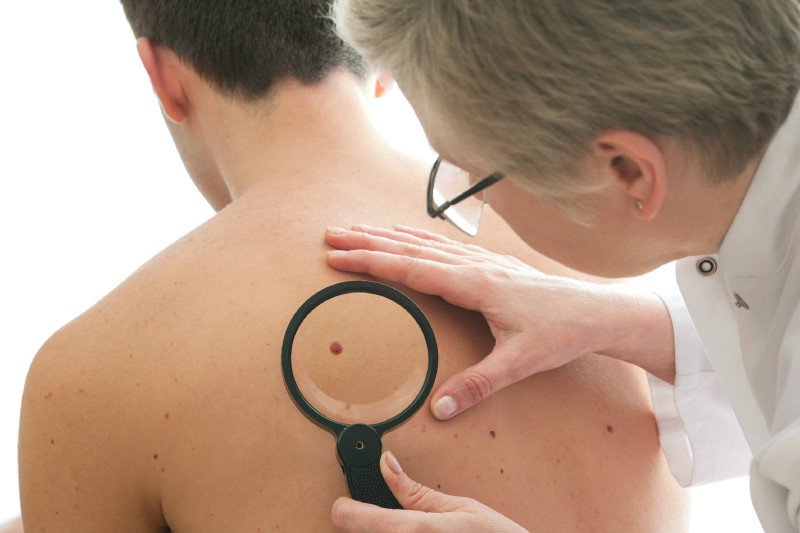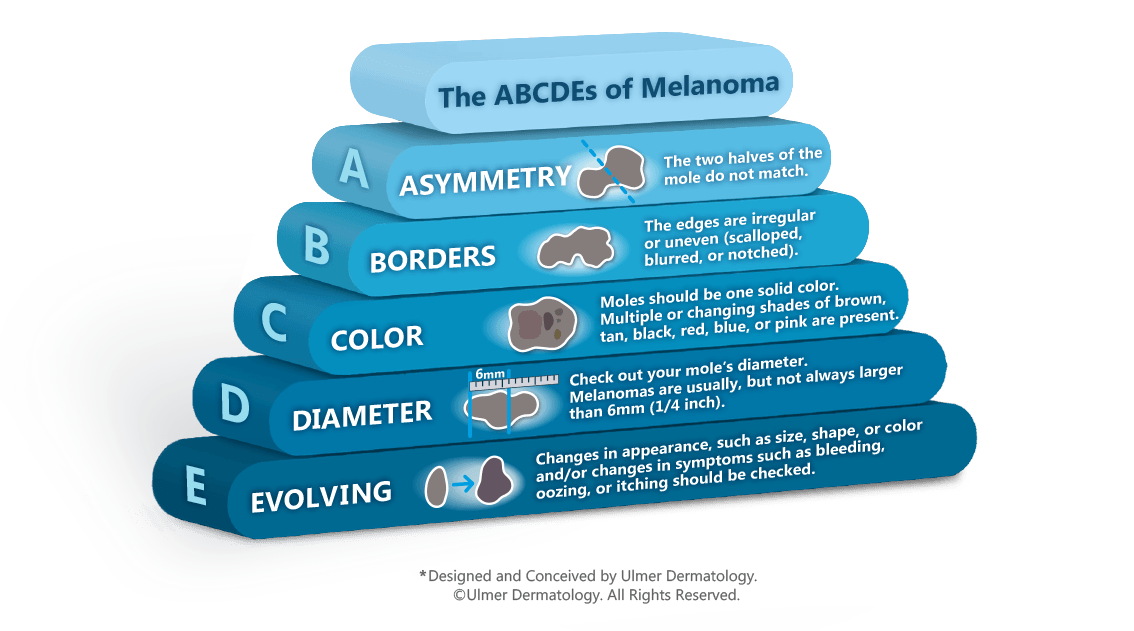Moles + Melanoma
What is a Mole?
This is a common term for the medical designation of “nevus.” The mole or nevus is a small, usually pigmented area on the skin which may be flat or raised. It may appear anywhere on the body, and may be present from birth. In general, most people develop between 60 and 100 moles during their lifetime. Many of these begin to appear in and around puberty. In many cases, a nevus cannot be distinguished by its appearance from a freckle.
What Causes a Mole? Are They Contagious?
The nevus is composed of a particular tissue cells called nevus cells. These cells are part of the skin, and are located in the lowermost epidermis (outer layer) and uppermost part of the dermis.
Nevi are not contagious, and have a tendency to be hereditary.
When Should a Mole be Removed?
Mole removal is a simple and painless procedure performed in our office. The following are considerations for mole removal:
- If you have had an “atypical” or abnormal mole, or if there is a history of melanoma in your family, annual skin exams should be performed by a dermatologist to screen for irregular moles and skin cancer.
- A nevus increases in size, scaling, bleeding or any change in color or firmness.
- A nevus subject to chronic irritation, such as a shoulder strap, bra, razor, belt, etc.
- Removal of large congenital moles, or moles present since birth, is recommended as there is a higher incidence of developing malignant melanoma in this type of lesion than in those which arise later in life.
- A nevus may be removed if the patient considers it unsightly from a cosmetic point of view.
Can Mole Removal Result in Cancer?
The removal of a mole does not cause cancer or induce cancer in that mole.
When is a Mole More Likely To Be Malignant?
If there are suspected changes in a mole, do not hesitate to obtain a dermatology consultation. The following are suspicious changes:
- A slowly enlarging, blue-black flat mole which has become thickened demands immediate attention.
- Any mole that is enlarging, asymmetrical, has varied coloration (pink, brown, black within one mole), or irregular fuzzy borders should be evaluated by a dermatologist.
- Moles in persons with sandy red hair and light complexions are more susceptible to malignant changes, especially when there is repeated over-exposure to the sun.
- A dark colored patch slowly enlarging on the face of an older person over many years should receive dermatological evaluation. These lesions can degenerate into malignant lesions.
- The bathing trunk nevus is a large area of skin which is flat or warty and pigmented, and the nevus may be hairy. Such areas may need extensive plastic surgery or other removal, because of increased incidence of malignant change.
How Do You Tell if a Mole is Malignant?
The diagnosis of malignancy in a particular nevus can only be made when the tissue is examined under the microscope by a dermatologist or dermatopathologist. Biopsy or surgical excision is required to determine malignancy.
Should Moles in Children be Removed?
Nevi that appear at birth or shortly thereafter are called congenital moles. These are not all suspicious for malignancy. The size of congenital nevi determines, in part, its malignant potential. Large congenital nevi should be evaluated by your dermatologist.
In addition, hormones in puberty can change the appearance of moles and the number of nevi on an individual. These changes are expected and should not cause alarm. However, annual skin exams should be completed to evaluate new moles or changes in existing moles.
What Other Conditions Resemble Moles?
The most common skin tumors which resemble moles are skin cancers, benign fibromas, and nodules of the skin. Most commonly, seborrheic keratoses may resemble moles but they are not composed of nevus cells. Seborrheic keratoses are benign warty growths of varying color which appear stuck on the skin and generally appear later on in age.
Will Removal of a Mole Leave a Scar?
Generally, there is little or no trace of removal. If excision is necessary, mole removal may leave a slight surgical trace that is barely visible.
Contact us today to receive a consultation for mole removal and possible melanoma treatment at our Long Beach dermatology office.
*There is no guarantee of specific results. Individual results may vary*




